I do a little bit of this, and a little bit of that. Perish the thought that I stick with something long enough to become truly proficient.
Don't wanna be here? Send us removal request.
Text
Me, an Ignorant person: I think I will get up now.
My cat: Wrong. Think again, bitch.


0 notes
Link
Posted to Facebook originally. Sharing here because this is a topic that makes me lit.
Summary: Google employee sends a (10 page??) memo to other employees, wherein he derides their commitment to diversity, and says that there are fewer women in tech because of biological differences.
He is fired.
Some right-wing news outlets are treating him as a martyr, and argue that he was fired for political differences and for holding views opposite to many of his co-workers. He will likely sue, and will probably use discrimination based on politics as his basis.
(My) Analysis: He was fired for creating a hostile work environment. Raise your hand if you want to work for someone who has very explicitly stated that you are bound to be inept at your job due to biology.
So he's created a hostile environment -- but isn't it hostile only because people are too sensitive and politically correct to build a thick skin against criticism?
I don't think so, and I have two reasons.
One: as a minority in anything, it gets real. Fucking. Old. having to morph ourselves to fit the standard mold. So yeah, perhaps we're a bit touchy when it comes to statements like, "aw, sweetie, you'll never be good at your job because you don't have the right chromosomes."
Two: a biological argument for vast gender differences when it comes to aptitude, intelligence, ability, work ethic, etc. are Utter Tosh.
There are only a handful of true biological differences between men and women -- and those differences are very slight. Most of our differences are enhanced by our society. By the social structures we live in. By the norms that are enforced. By the people in power who tell the minority that they don't have the "biological requirements to succeed in this field."
So, yes. Perhaps women ARE pre-disposed to not succeed in technology. But it's due to people like Fired Google Employee telling us we can't and sowing resentment and doubt in us.
Conclusion: screw the Status Quo. Change in diversity policies isn't "political correctness" for the sake of fragile snowflake egos. It's to realize the full potential of every single person in this country. Stop trying to hold us back.
0 notes
Photo

While walking through an old building for work, I found the site of a past -- or future -- interrogation-turned-murder scene.
0 notes
Photo


“Making macarons.”
(Take #17)
0 notes
Video
tumblr
0 notes
Photo
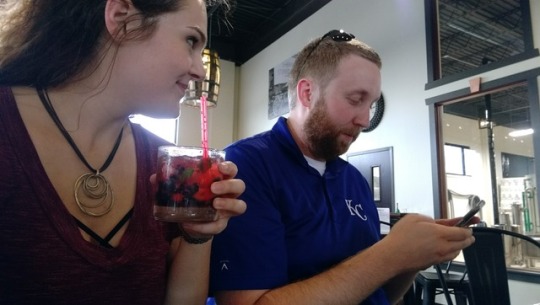

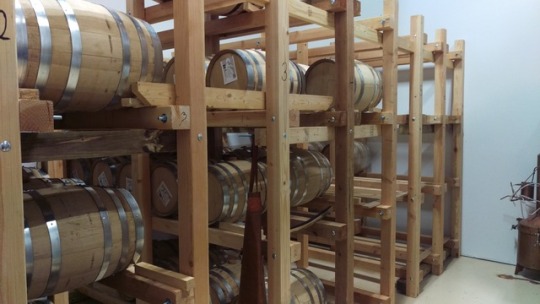
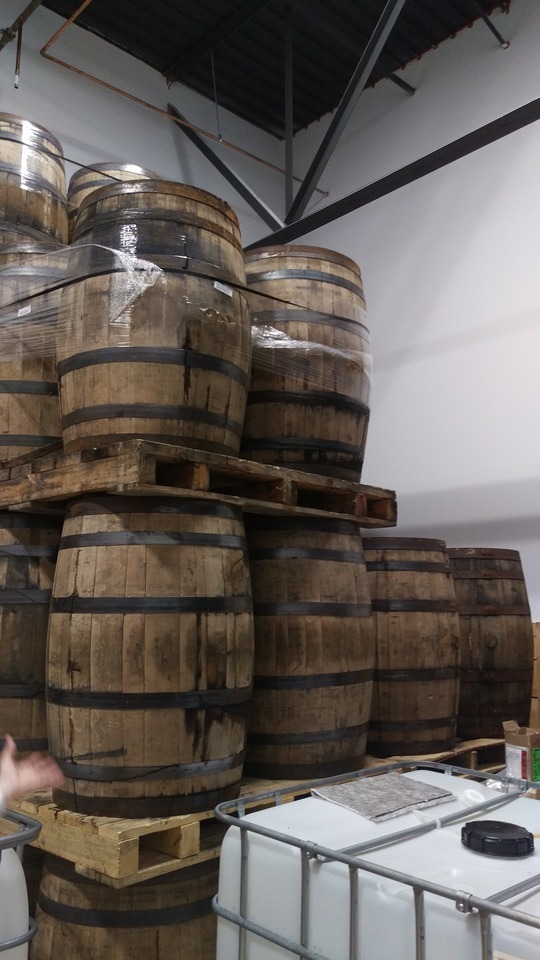

We found a distillery in North Kansas City. They give tours, and mix a bomb-ass cocktail. 10/10 would recommend.
0 notes
Text
Laena, the Halfling Mystic
This is a backstory I wrote for a character in an upcoming Dungeons and Dragons campaign. It’s in the Unearthed Arcana setting, which is essentially the Wild West of D&D. In this world, new technology has enabled folks to drill passage through an insurmountable mountain range and explore the untouched wilds on the Other Side.
Laena was orphaned at a young age. Her mother and father perished in a fire that destroyed several city blocks. She, at the tender age of three, was carried to safety by her elder brother, Pereldon. For a very short time they wandered the streets, attempting to survive in he chaotic aftermath of the fire. Soon, however, they were picked up by the city guards.
Pereldon was given to the charge of their second cousins once removed, Adelaide and Cadal. They did not take Laena, though. Adelaide and Cadal already had five of their own children to feed, and at least at the age of nine, Pereldon could be some help on the family farm. So it was that Laena was given to the care of the church. The priests and acolytes there took care of her for several years. They fed her, clothed her, and taught her. It was with the church that Laena learned to read and write. The priests quickly noted her aptitude for learning. Their suspicions about her intellect were confirmed one day when they discovered her in their vast library. Laena had found every book in Halfling -- which she had only begun to speak before her parents died -- and was teaching herself the language anew. The elders of the church discussed the matter, and by Laena's 6th birthday had decided to send her to their sister Monastery, high among the peaks of the impassable mountain range. For two weeks, she and a small convoy of priests and acolytes traversed the treacherous mountain paths to reach the hidden monastery. When they finally arrived, Laena was delighted to find a haven among the clouds. The monastery was beautiful. There were green courtyards, wildlife was abundant, and the mountains were peaceful. But above all, Laena discovered a place for herself in the world. The order of priests at this monastery were focused on developing the mind, and they set Laena to all manner of challenging tasks. She finally learned Halfling, then learned to speak Elvish and write in the Elvish script. She meditated, learned several forms of martial arts, and learned to cook and use herblore. She began to read about the wonders of magic and the arcane, but her tutors pushed her to expand her mind, not her magic. Best of all, she had unfettered access to the library at the monastery. Laena became good friends with the librarians and scholars there, even aiding them in their research at times. Her appetite for books and knowledge was insatiable. By the time she was 14 years old, Laena managed to unlock her first psionic talent. In a particularly grueling training session, as one of her masters psychically attacked her mind while she held up a barrier, Laena's mind suddenly pulsed, and it sent her master skittering back across the stone slabs of their training courtyard. Rather than the anger she'd expected, Laena was baffled to find that her masters were pleased with such an outburst. Her training took a turn from that day, and she spent more time learning to unlock her innate psionic prowess, and less time aiding the librarians with their research. Still, the call of knowledge beckoned her, and she spent many late nights amid the tomes of the monastery. When Laena turned 21 years of age, the masters decided that she needed to take a journey. For almost her entire life now, she had been secluded in the safe arms of the monastery's mountain sanctuary. But to truly master her psionic talents, Laena had to experience the rest of the world. They suggested that she could reconnect with her brother, or perhaps find employ among the halls of civilization down the mountain. Or, they suggested, she could even venture to the other side of the mountains. Even in the remote mountain monastery people had heard tell that, with modern technology, folks were now able to travel more freely from one side off the mountains to the other. But the other side -- the unknown side -- was wild and untamed. None yet knew it fully, and none yet knew what might be there. Laena left what had been her home for the past 15 years in thoughtful introspection. Where did she want to begin her journey? Where would her feet lead her?
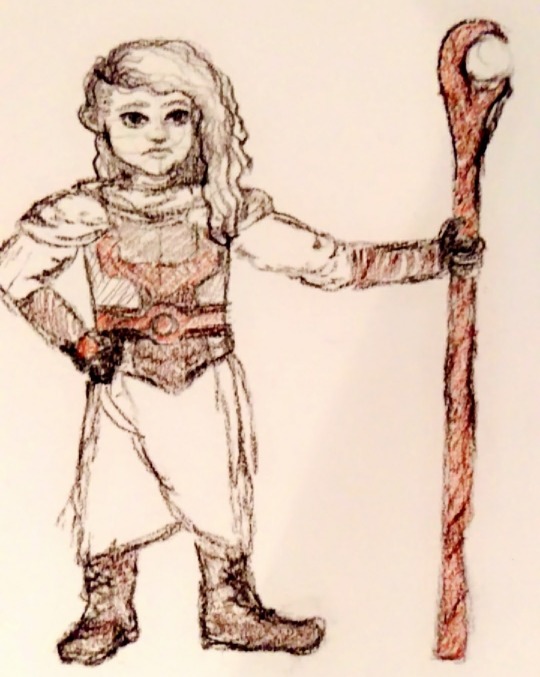
0 notes
Photo
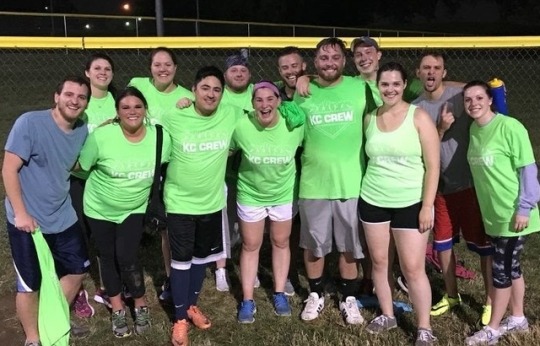
Torrential downpours may have been in the forecast, but the first game of the kickball season went on all the same.
If you miss the halcyon days of kindergarten, then this is a rec league sport you should check out.
0 notes
Text
An Origin Story
This is the origin story of a world I’m building for a D&D campaign.
In the beginning, during the First Age, all that existed was Life and Death.
But alone, Life and Death had no meaning. Thus, in the Great Realm they created an ocean. On that ocean they built a vast continent, called Santerra. And it was on Santerra that Life and Death created the First Race.
But the First Race had only Life and Death to guide it. They saw that their creations needed more, and so gave birth to Growth.
Growth cared for the First Race and helped it thrive, and Life and Death were pleased. But soon the First Race covered every surface of Santerra, and there could be no more room. So Life and Death created Illness, and Illness offered a balance to Growth’s power.
But Illness gained too much influence among the First Race, and grew too powerful, and the First Race was nearly extinguished. To save them, Life and Death created Healing. And slowly the First Race again grew in number.
But the beings of the First Race became reckless. They knew that with Healing to spare their lives, they could put themselves in immeasurable danger. Healing became stretched and over-worked. So Life and Death created Pain. And Pain helped Healing by enticing the First Race to exercise caution.
For much of the next thousand years, these four balanced each other to create harmony in Santerra. But Life and Death saw that something was missing. The people of the First Race were alive, but they were not living. So Life and Death conceived Love, so that the First Race might have meaning.
They did not anticipate, however, that Love would have a twin: Jealousy. But together they were born, and thus both Love and Jealousy were brought into the world.
And for many more thousands of years after, the Gods of Life and Death and their children, the Lesser Gods, worked to keep Santerra in balance. The First Race grew and thrived, eventually giving birth to races of their own: the elves, dwarves, humans, halflings, gnomes, and more.
The world eventually grew too chaotic for all the Gods to keep vigilant watch. Their influence waned, and the New Races became self-sufficient. They still worshipped Growth, Illness, Healing, Pain, Love, and Jealousy, and of course Life and Death above all. But no longer were they a tangible presence in the world.
The Gods eventually supplanted themselves from the Great Realm the New Races had been born in, and made the outermost realm their new home. There, in the Realm of the Gods, they could keep watch over their creations and occasionally offer aid to the most devout of their followers.
Thus began the Second Age.
For many generations the New Races grew, and the Gods watched in happiness from their Realm. But they grew distressed when they saw that their creations were creating factions and waging war with one another.
After such a long time, and with life much shorter than that of the Gods, the New Races had forgotten that they were all brethren, descended from the First Race. They segregated themselves, and fought bitterly with members outside of their own Race.
Filled with regret and ire, the Lesser Gods, at the behest of their parents, descended from the Realm of the Gods. They fell upon Santerra in such a rage that it cracked the continent with a thunderous clap heard across all the realms. All the warring clans were split down the middle as Santerra broke into four pieces, drifting apart on the vast ocean.
It was thus that the four new continents were born. They were named Odevra, Amaleya, Lilaewin, and Ydonia. Clans that had been separated discovered that they now shared a continent with members of other clans. And after many more generations, they once again became friends.
Satisfied, the Lesser Gods came together to bestow upon the New Races a gift. Growth, Love, and Healing created Knowledge, that they might find a way to reach one another across the vast seas. To counter Knowledge’s power, Illness, Pain, and Jealousy created Fear, that The Races might not be reckless in their worship of Knowledge.
This marked the beginning of the Third Age.
The Lesser Gods returned to the Realm of the Gods, and their influence in the Great Realm once again waned. The New Races, now more connected than ever, still worship Life, Death, and all their offspring. With the help of Knowledge and Fear, progress is ever pursued across the four continents -- but never at the expense of Life and Death. For they are ever revered, and above all held sacred.
0 notes
Text
Figure Painting
What encapsulates the idea of a Renaissance Woman more than the art of drawing Naked People?
Despite having taken art classes throughout elementary and high school (including some from the Kansas City Art Institute), I managed to go 24 years of life without drawing a single nude portrait.
That changed earlier this year when I took my first figure drawing class.
(Well, actually, it was an oil painting figure class. Because why do anything in half measures if it can be extremely difficult, right? ;D)
Normally I share my art on facebook. But it didn’t feel right posting nude paintings for my grandma to see. Plus, I’m not sure if I’d be flagged for explicit content.
So I will share my never-before-seen paintings here, below the cut!
I took this class at the Kansas City Art Institute. They have continuing education classes for citizens like me, so I don’t have to sit with uber-talented 18 year olds who make me feel old and out of touch.
We painted in three different styles for the course. The first was to draw the figure, outline the shadow shapes, and paint a layer of very wet paint over the whole thing. Then we blotted out the light parts, and added an extra layer to the dark parts.
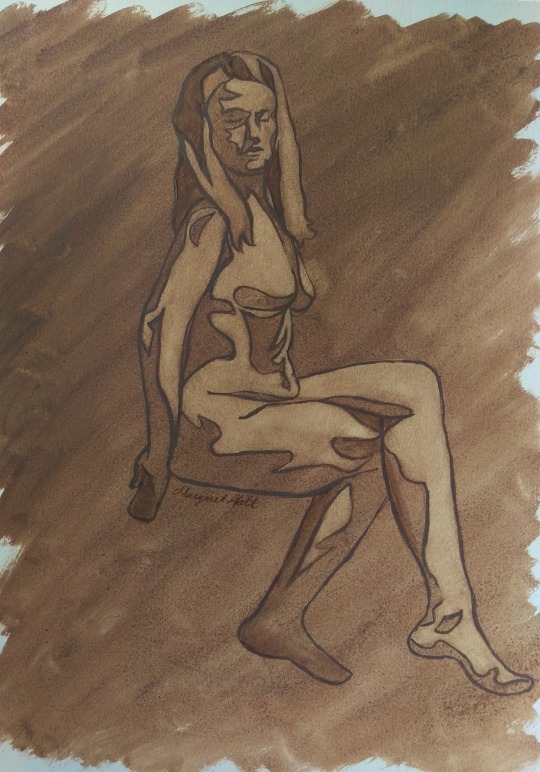
The second portrait we did went into further detail on the shadow shapes. Rather than only one or two levels of shadow, we had seven. The initial drawing was like developing a paint-by-number: we drew the shapes of the shadows, and labeled them with a number corresponding to the depth of the shadow.
Such detail was interesting by itself, but we were also tasked with applying the grayscale colors with a palette knife, rather than a brush.

For the last portrait, we were finally able to use color. We started by sketching basic forms of the figure. But then we filled in all the detail with color as we saw it.
Even though this is the portrait we spent the most time on, it was also the one that needed the most detail and attention.
And let’s be real: mixing colors is MUCH more work than mixing gray tones.
And so, because the class ended, this is as far as I got. I am not too upset though, because I was worried about painting the dangly bits. I had a disturbingly good view of them.

Painting has been one of my dabbles that I love to do, but rarely get around to unless I’m in the structured confines of a classroom. I’m so happy with how these turned out. Now I just need to take a How To Draw Clothing class...
0 notes
Text
Re-branding: The Basics
I’m taking this blog in a different direction. I’ll post a lot more original content (as a challenge to myself to MAKE more original content). Here is how I will (attempt to) tag everything:
Posts about:
beer or alcohol: #drink up
food: #delectable sustanence
writing: #words words words
clothing: #faux fashionista
animals: #fuzz bucket
art: #art
Kansas City: #KC tours
If you like what I share, but think I can make improvements, let me know! I’m a novice (see: dilettante), and there is always something for me to learn.
#drink up#delectable sustanence#words words words#faux fashionista#fuzz bucket#art#KC tours#dabblingdilettante
0 notes
Text
Women aren't any more complicated than men you're just used to thinking of them as objects instead of human beings
women arent complicated youre just dumb
171K notes
·
View notes
Photo

Snapchat caption of a self portrait I sketched tonight. First thing to note is that, for an hour-long session, as a very rusty artist I'm pleased with how this turned out, aesthetically. That said... It doesnt look like me. Not really. It's too perfect. But I wasn't trying to draw myself perfect. I just want to learn how to draw reality. This isn't me.
3 notes
·
View notes
Text
I’m gonna depress the hell out of all of you. ready? ok go
so, that “stop devaluing feminized work post”
nice idea and all
but the thing is, as soon as a decent number of women enter any field, it becomes “feminized,” and it becomes devalued.
as women enter a field in greater number, people become less willing to pay for it, the respect for it drops, and it’s seen as less of a big deal. it’s not about the job- it’s about the number of women in the job.
observe what happened with biology. it’s STEM, sure, but anyone in a male-dominated science will sneer at the idea of it being ‘for real,’ nevermind that everyone sure took it more seriously when it was a male dominated field. so has happened with scores of other areas; nursing comes to mind
so the thing is, it’s not the work or the job that has to be uplifted and seen as more respectable. it will never work out, until people start seeing women as respectable
but there’s a doozy and who the fuck knows if it’s ever happening in my life time
79K notes
·
View notes
Photo
ARMOUR.
DRESSES.

Dolce & Gabbana RTW F/W 2014-15
753 notes
·
View notes
Text
I often see foxes referred to as “catdogs” on Tumblr, but I wonder if folks realise how true that really is.
There’s a phenomenon called convergent evolution that occurs when two taxonomically unrelated species exploit the same ecological niche. The features that are needed to best take advantage of a given niche are pretty much the same everywhere you go; thus, over time, those species will become anatomically and behaviourally similar, even though they’re completely unrelated.
And foxes? Foxes are what you get when an ecosystem has no native small felines, so a canine species evolves to take advantage of the ecological niche that would have been exploited by a small feline, if one existed.
In other words, a fox is literally what you get when a dog tries to cat.
68K notes
·
View notes
Text
I love this.
let’s bring back the term “cats” when referring to a group of people (i.e. “see you cats later”)
pros:
it’s gender neutral
you get the chance to look like a cool jazz musician
you can compare all your friends to cats (always good)
cons:
????
#at work we have a generic scope letter template#and it's titled gentlemen#gentlement#ugh#fuck the construction industry#let's title this letter cats instead#I'm taking it to my boss tomorrow
396K notes
·
View notes